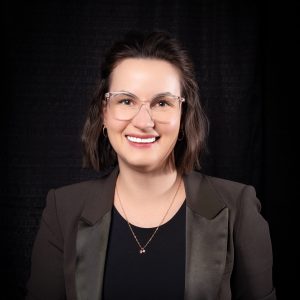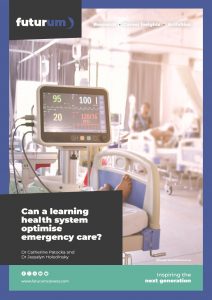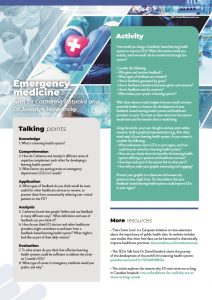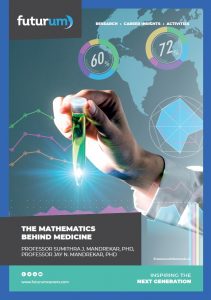Can a learning health system optimise emergency care?
Hospitals’ emergency departments are intense places, where the speed and efficiency of care is key for good patient outcomes. However, these departments often also deal with patients who have non-critical illnesses, which can restrict the resources available for those who really need them. At the University of Calgary in Canada, Dr Catherine Patocka and Dr Jessalyn Holodinsky are creating a feedback-based learning health system to optimise patient care in emergency departments.
Talk like an emergency medicine researcher
Amputation — the surgical removal of all or part of a limb
Data science — a multidisciplinary field that uses scientific methods to extract knowledge from data
Emergency department (ED) — the hospital department that provides immediate medical care for patients with urgent illnesses or injuries
Frostbite — injury to body tissues (typically the hands and feet) due to exposure to extreme cold, which may require amputation of the affected area
Learning health system — a healthcare system designed to continuously improve by integrating new data and knowledge
Healthcare involves making crucial decisions, not just about which treatments to give, but also about which health services are best suited for each patient. However, these decisions are not always optimised. Many patients end up in a hospital emergency department (ED) even if they do not have a serious urgent condition.
Why do non-critical patients end up in the ED?
“Patients are often directed to the ED by other healthcare providers,” explains Dr Catherine Patocka, an ED doctor. “Because the healthcare system is so stretched, some people are sent to the ED simply because they can’t get help anywhere else.” This creates strain on the ED, meaning fewer resources are available for true emergencies. This is problematic because for someone with a critical illness, receiving timely care in the ED can be the difference between life and death. “Many Canadian hospitals struggle to provide quick access to emergency care,” says Dr Jessalyn Holodinsky, a data scientist who specialises in ED health services. “Many patients face crowded waiting rooms and long delays, which negatively impact their outcomes.”
“Right now, we don’t have good ways to measure the scale of the problem of non-critical patients being referred to the ED,” continues Catherine. “What we do know is that trying to use the ED to fill gaps elsewhere in the healthcare system is a worrying and harmful trend.”
Could a learning health system provide a solution?
Healthcare systems are highly complex, meaning they need highly complex management structures in place. They need to be able to continuously adapt and deal with new information to offer optimal care. “A learning health system aims to do this,” says Jessalyn. “A good learning health system continuously and systematically generates, applies and learns from data and evidence to improve patient care and system performance.”
Catherine and Jessalyn are combining their expertise in emergency medicine and data science to develop a learning health system to improve EDs in Calgary. They are tackling the question of how to optimise emergency care by assessing and changing practices across the healthcare system, with a focus on how to use feedback to reduce unnecessary referrals to the ED.
How are Catherine and Jessalyn developing a feedback-based learning health system?
“Catherine’s clinical experience helps us understand the real challenges faced by frontline healthcare providers, and her expertise in health education allows her to design feedback that supports learning and professional growth,” says Jessalyn. “My knowledge of data science allows me to analyse patterns, test ideas and build systems that can learn and adapt over time.”
With this collaborative approach, Jessalyn and Catherine are developing a learning health system for the ED that uses feedback for continuous improvement. “Achieving this vision requires a deep understanding of how individuals and systems within healthcare learn and evolve,” explains Catherine. “We propose that feedback is key – using past performance to guide and enhance future performance.” To this end, Catherine and Jessalyn are investigating which forms of feedback should be integrated to build an effective learning health system that ensures patients are directed to the most appropriate health services.
“My work in feedback began by asking ‘What do people mean when they say ‘feedback’?’” says Catherine. “Though it seems like a straightforward idea, I quickly found that people define and use feedback in many different ways.” Over the course of her PhD, Catherine started to make sense of all these different ideas by exploring social science theories which helped her develop a model to understand the many meanings of feedback. “With this model, we can study different types of feedback and see what works best in different situations,” she explains.
Catherine and Jessalyn are exploring how electronic health record systems can give feedback to healthcare providers that refer patients to the ED. “We start by using data to understand the scope – for instance, how many patients are referred to the ED?” says Jessalyn. “Then, through focus groups, we try to understand what type of feedback is reaching healthcare providers and what other information would be useful for them.” Jessalyn and Catherine talk to healthcare providers, observe how referral events play out in real time, and analyse data using statistics and computer programs. By collating all this information, they hope to find ways to change how the healthcare system functions, to better allocate resources to those that need them most. “Our aim is to create practical, evidence-informed feedback tools that are tailored to different healthcare settings, especially in the fast-paced world of emergency care,” says Catherine.
An example of success
Reference
https://doi.org/10.33424/FUTURUM602
Calgary’s new frostbite protocol is a great example of how a learning health system works when data and evidence are implemented to improve how care is delivered. During the winter, doctors were seeing a lot of frostbite cases, particularly among unstably housed people exposed to the extreme cold. Recognising that a new treatment was reducing frostbite amputations in Canada’s North, healthcare providers applied the principles of learning health systems to hasten the implementation of this new knowledge and treatment into the regular routines in Calgary. “The results were impressive,” says Catherine. “Data analytics have demonstrated that fewer people in Calgary needed finger or toe amputations. Because of this success, other places in the province have started using the same approach.”
As Jessalyn highlights, “This shows how a learning health system can take what works, apply it quickly in real-life care, and make a big difference in patient outcomes.”
 Dr Catherine Patocka
Dr Catherine Patocka
Fields of research: Emergency medicine, health professions education
Dr Jessalyn Holodinsky
Fields of research: Data science, health services research
Institution: Department of Emergency Medicine, University of Calgary, Canada
Research project: Creating a feedback-based learning health system to optimise emergency care
Funder: Cumming School of Medicine O’Brien Institute Learning Health Systems Catalyst Grant
About emergency medicine
Emergency medicine involves providing care for patients with critical illnesses or injuries. Catherine and Jessalyn’s different career paths demonstrate the importance of diverse professional backgrounds for solving challenges in the field.
When not researching, Catherine is a doctor in the ED – a fast-paced and variable environment. “No two days are the same,” she says. “I care for people with all kinds of health problems, from minor injuries to life-threatening conditions. I have to think on my feet, solve problems and stay calm under pressure. Most of all, I try to make sure each patient feels safe and cared for, during what may be the hardest moments of their lives.”
Her academic role is a contrast to the hectic ED. “A typical day of research involves a lot of deep thinking, writing and problem solving,” says Jessalyn who, as a data scientist, is a full-time researcher. “We spend hours at the computer, reading, analysing data, and writing papers and grant applications.” Like any career, research inevitably involves setbacks, but the rewards are worth it. “We get to work with smart, dedicated colleagues and address real-world problems,” says Jessalyn.
Catherine and Jessalyn both highly recommend a career in emergency medicine. “The work is fast-paced, challenging and teaches you lots of skills,” says Catherine. “It’s meaningful, full of variety and truly makes a difference to the lives of others.” Jessalyn emphasises that many careers within emergency care do not involve direct patient care. “I work ‘behind the scenes’ to help my colleagues who are ED doctors to improve patients’ lives,” she says. “If you get excited by tackling complex problems, emergency medicine research could be for you.”
Pathway from school to emergency medicine
“We need people from a wide range of backgrounds in emergency medicine,” says Jessalyn. “There’s no ‘right path’ to emergency medicine. What matters most is curiosity, compassion and a drive to make a difference.”
To work in a hospital ED, you will need to study a clinical degree such as medicine or nursing, which typically ask for high school qualifications in biology and chemistry.
To work in emergency medicine research, you could study a degree in data science, public health or a related field. These may ask for high school qualifications in mathematics, statistics or computing.
At high school, other subjects such as languages and arts can be highly beneficial, especially for developing your communication skills, which will be useful for collaboration and patient interactions.
Explore careers in emergency medicine
“Emergency medicine offers lots of career paths,” says Catherine. “You can be a frontline care provider, a healthcare system leader, a teacher training the next generation or a researcher working to solve healthcare problems.”
The University of Calgary’s Cumming School of Medicine offers the Pathways to Medicine Scholarship Program, which supports students from underrepresented backgrounds to pursue medical careers: cumming.ucalgary.ca/future-students/scholarships/pathways-medicine-scholarship
ProjectsAbroad provides medical internships around the world for high school students: projects-abroad.ca/medical-internships-high-school-students
Meet Catherine

As a teenager, I competed nationally as a figure skater and did intensive ballet. These experiences taught me a lot about discipline, creativity and managing pressure – skills that I use every day in the ED.
My mom inspired me to become an ED doctor. She worked as a rural emergency doctor, and I grew up watching how calm and capable she was in tough situations. I remember one time, when a woman had a seizure in a hot tub at the gym, my mom immediately took charge until the paramedics arrived. Watching her show up for others with such confidence and kindness really shaped my path.
As an ED doctor, I have the chance to help people when they’re at their most vulnerable. It’s incredibly meaningful to be there for them at that moment. But the work is getting harder. Our resources are stretched, the system is under pressure and sometimes the emotional weight of the job can really take a toll.
Some of my favourite memories from working in the hospital come from the quiet hours of a night shift, around 3 or 4 am. Everything slows down and you know the people who are in the ED really need our help. There’s a strange calm and a deep sense of purpose.
My young family keeps me busy outside of work. I love to relax by rowing on a peaceful lake, stretching out on the couch with a good book or baking.
Catherine’s top tips
Keep an open mind and enjoy the journey. You don’t need to figure everything out right away. Explore different interests, be curious and stay flexible. Some of the best opportunities come from unexpected places.
Meet Jessalyn

At high school, I loved math and science. I also competed nationally as a figure skater and was involved in competitive dance, so I was very busy. I think this set me up to handle juggling the many responsibilities of a career in academia.
My mom inspired me to enter the medical field. She was a nurse in a hospital Intensive Care Unit (ICU), and I loved hearing stories about the patients she helped and the lives she saved. I thought I wanted to become a medical doctor, possibly in the ICU. While at university, I volunteered in the ICU to organise its research data. There, I learned about medical research and discovered I could contribute to healthcare in other ways.
As a data scientist, I enjoy knowing my work has an impact and makes a difference to the lives of patients and the healthcare workers who look after them.
I want to make statistics fun! We use data every day to make decisions, but so many people get intimidated by numbers. It’s important that people understand statistics but it’s hard to get your point across if the content is boring. I want my lessons to make statistics exciting and accessible to spark curiosity in my students.
I love the outdoors and try to spend as much time outside as possible. That means tending my garden and hiking in the foothills of the Rocky Mountains, through both sun and snow.
Jessalyn’s top tips
Never be afraid to ask questions or try something new. There are so many career opportunities you might not even know about yet. Make sure to take time to really understand what motivates you and makes you happy, so you can find a job that you enjoy and find rewarding.
Do you have a question for Catherine and Jessalyn?
Write it in the comments box below and Catherine and Jessalyn will get back to you. (Remember, researchers are very busy people, so you may have to wait a few days.)











0 Comments